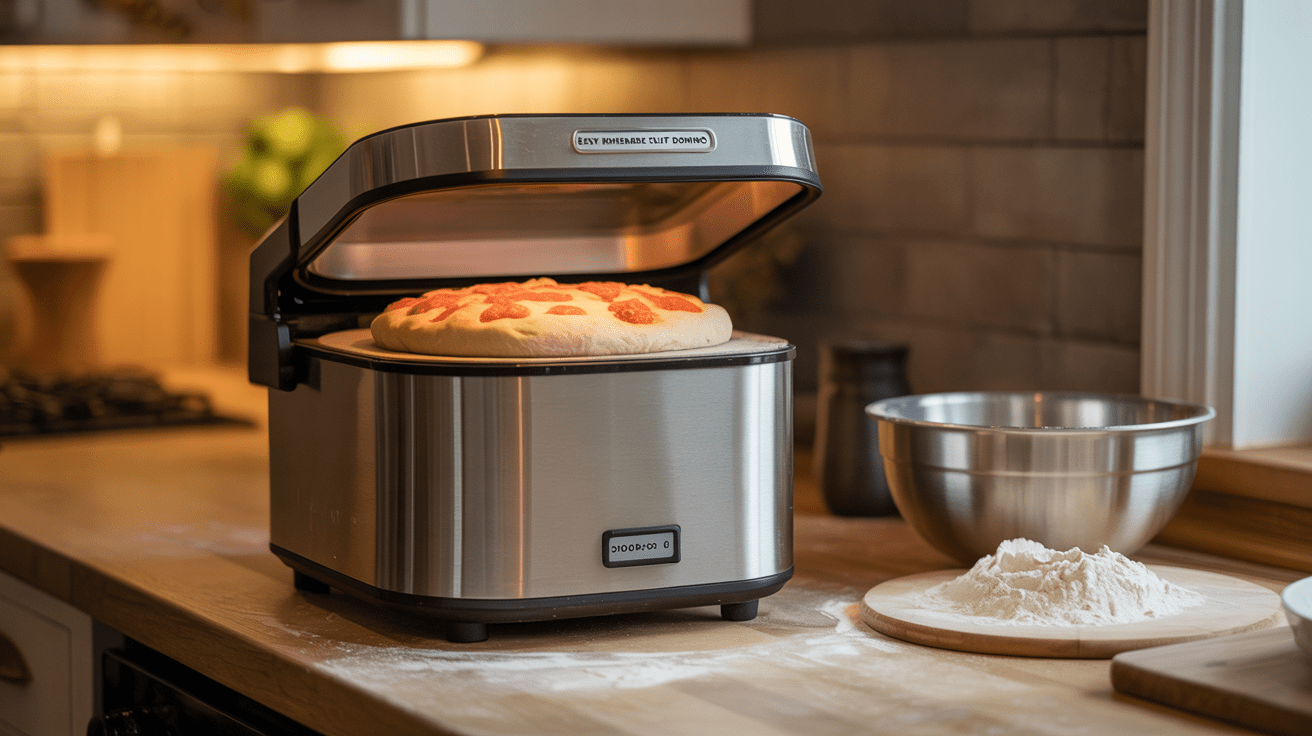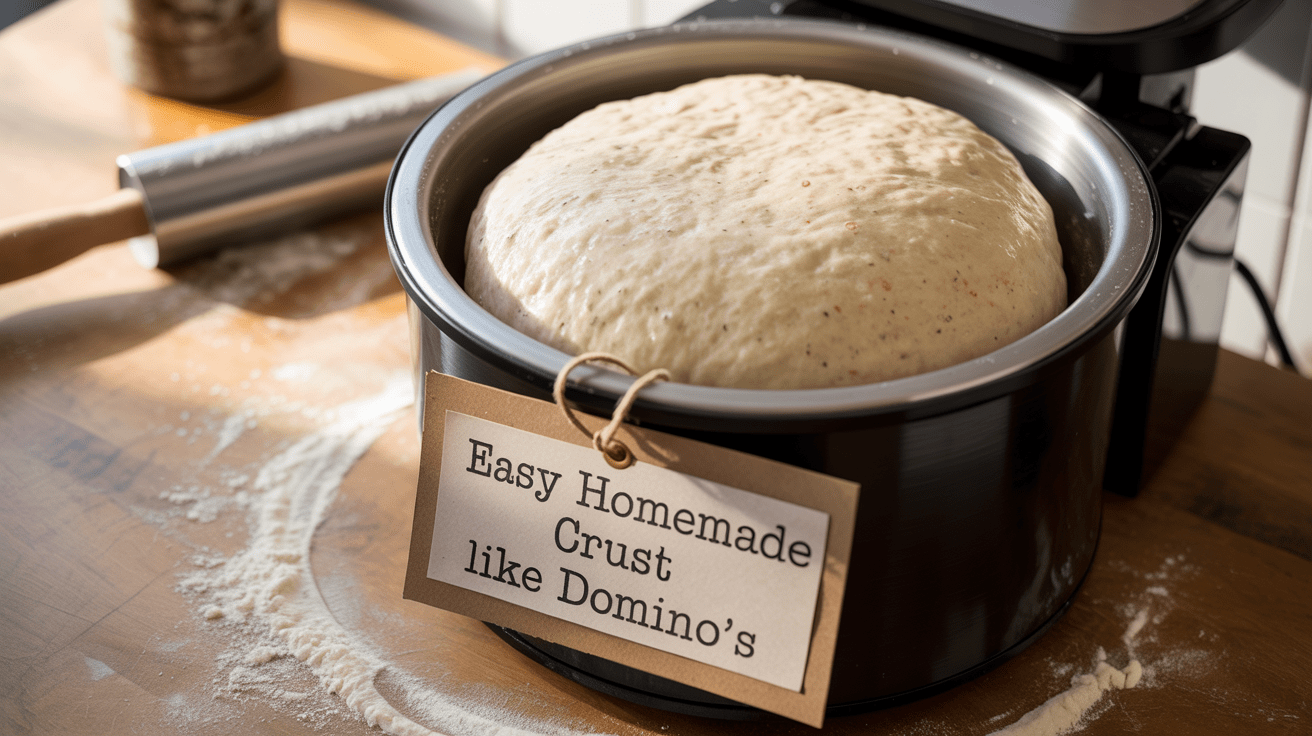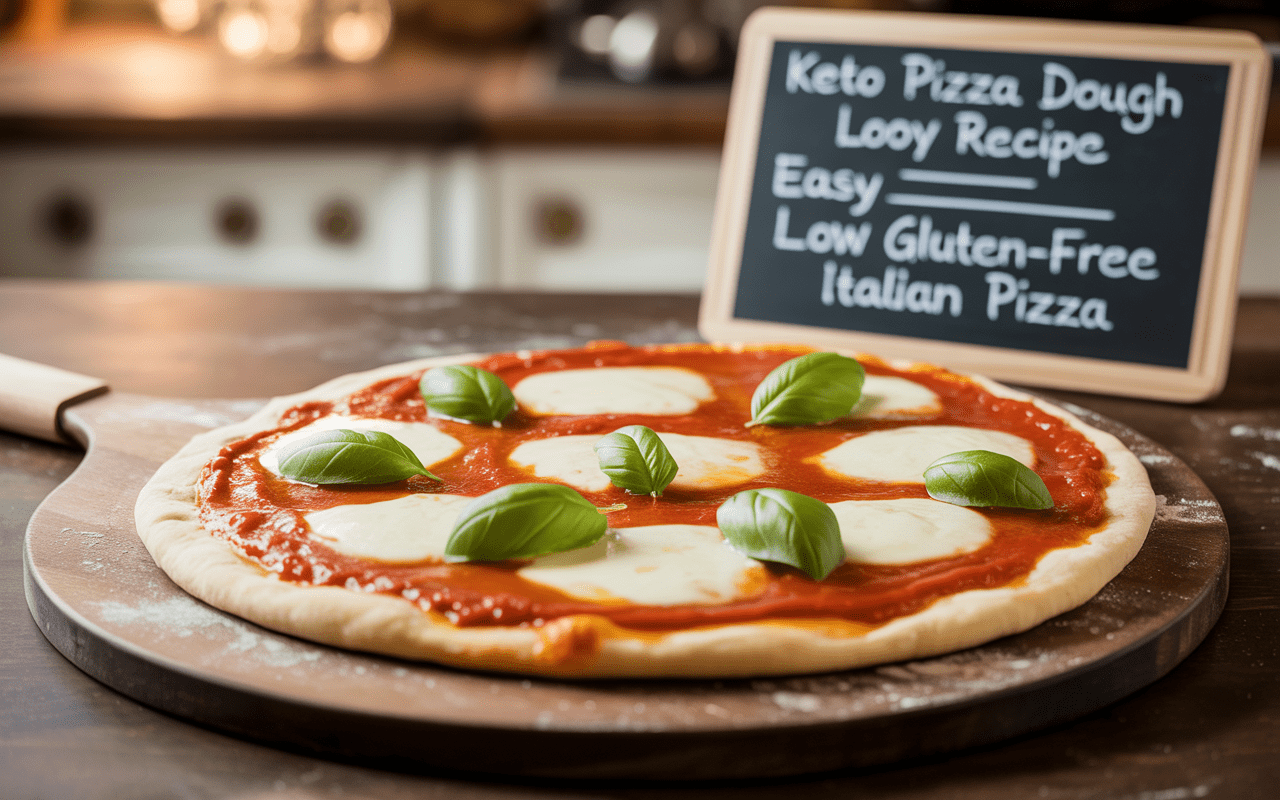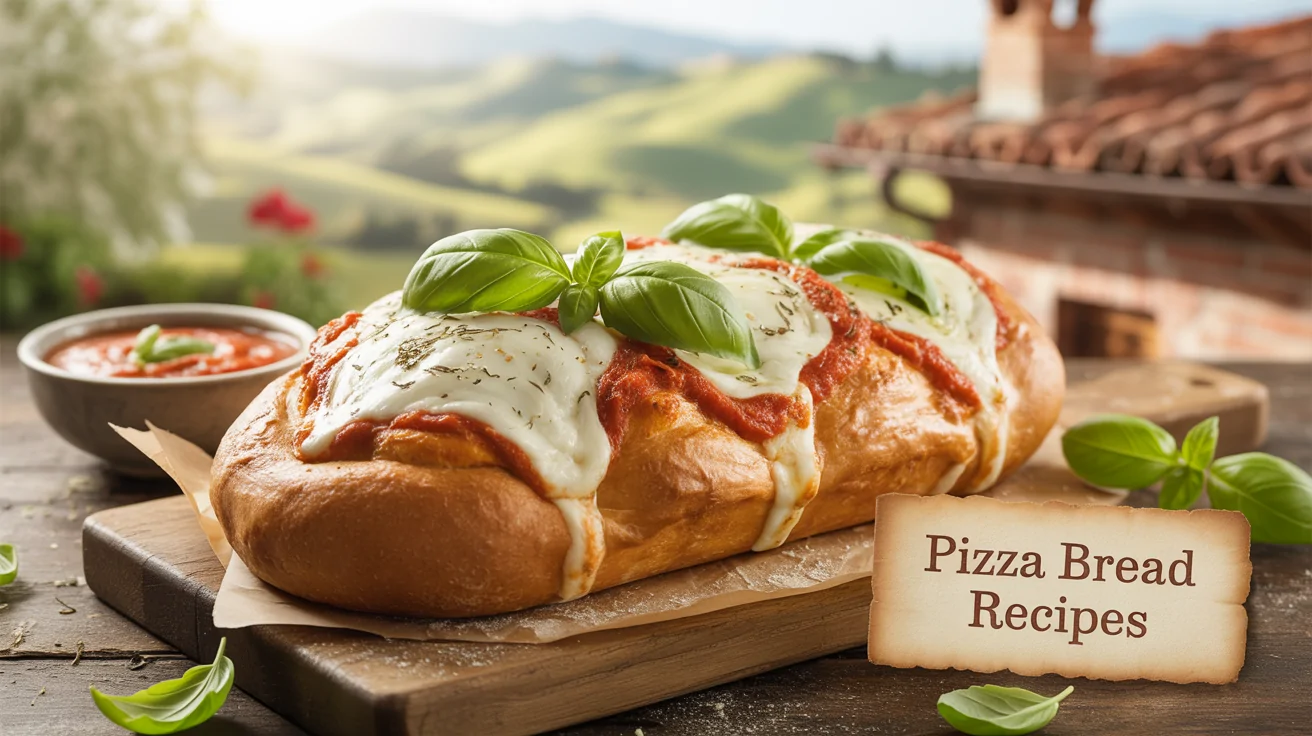Pizza Dough Recipe Bread Maker | Easy Homemade Crust Like Domino’s

The Ultimate Pizza Dough Recipe Bread Maker – Perfect Crust Every Time
If there’s one thing I’ve learned after years of chasing the dream of restaurant-style pizza at home, it’s this: the dough is everything. Toppings matter, of course. Sauce can make or break a pie. But without a killer crust? Forget it. That’s where this pizza dough recipe bread maker trick comes in. It gives you the chewy inside, the golden crisp edges, and the flavor that makes you close your eyes with the first bite.
The beauty of using a bread maker for pizza dough is how much easier life gets. Instead of kneading for 15 minutes and second-guessing hydration levels, the machine does the hard work. But don’t think of it as cheating. Think of it as smart cooking. Authentic taste, less hassle. That’s my kind of kitchen win.
Today, I’m sharing my tried-and-true bread machine pizza dough recipe. This is the dough I’ve perfected over years of experimenting with ratios, flours, oils, and rise times. And trust me — once you make pizza this way, your Friday nights at home will never be the same.

Ingredients You’ll Need
Here’s exactly what I use when making my pizza dough recipe in a bread maker. Simple pantry staples, but together they create magic.
| Ingredient | Measurement | Notes |
|---|---|---|
| Bread flour | 3 ½ cups (420g) | Higher protein = better chew |
| Warm water | 1 ⅓ cups (315ml) | About 110°F |
| Olive oil | 2 tbsp | Adds flavor + softness |
| Sugar | 1 tbsp | Helps yeast activate, balances flavor |
| Salt | 1 ½ tsp | Essential for structure + taste |
| Instant dry yeast | 2 ¼ tsp (1 packet) | Bread maker will proof it perfectly |
Optional: A pinch of garlic powder or dried oregano mixed into the dough gives extra personality.

Step-by-Step Instructions
Here’s how to make this bread machine pizza dough recipe work like a dream:
1. Add ingredients in order
Bread makers are picky. Always add liquids first (water, olive oil), then dry ingredients (flour, sugar, salt), and finally yeast on top. This layering ensures yeast doesn’t touch the liquid too soon.
2. Set to “dough” cycle
Most machines have a “dough” option. Select it and let the magic happen. Depending on your bread maker, this takes about 90 minutes. During this time, it will knead, rest, and proof the dough.
3. Check consistency early
About 10 minutes in, peek inside. The dough should form a smooth, elastic ball that’s slightly tacky but not sticky. If it looks too dry, add a teaspoon of water. If too wet, sprinkle in more flour.
4. Remove and shape
When the cycle ends, transfer the dough onto a lightly floured surface. Punch it down gently to release air bubbles. Divide into 2–3 equal portions depending on pizza size.
5. Rest before stretching
Let the dough rest 10 minutes under a damp towel. This relaxes the gluten, making it easier to stretch thin without springing back.
6. Top and bake
Stretch into your desired pizza shape, add sauce, cheese, and toppings. Bake on a pizza stone or steel in a preheated oven (475–500°F) until golden brown and bubbly — about 10–12 minutes.

Why Use a Bread Maker for Pizza Dough?
You might wonder: why not just knead by hand or use a stand mixer? Here’s why I swear by my bread maker for pizza dough:
- Consistency: No guesswork. Every batch comes out the same.
- Hands-off: While the machine kneads, you can prep toppings, sip wine, or wrangle the kids.
- Proper proofing: The machine controls temperature perfectly for yeast activation.
- Less mess: Fewer flour clouds floating around your kitchen.
This is the secret behind my weeknight pizza nights that feel stress-free but still taste like I fussed for hours.
Tips & Tricks for Perfect Bread Maker Pizza Dough
Here’s where experience really makes a difference:
- Use bread flour, not all-purpose. That higher protein content creates chewy, pizzeria-style crust.
- Don’t skip olive oil. It keeps the dough tender and adds flavor depth.
- Preheat your oven fully. A screaming hot oven (with stone or steel if you have one) is key for crisp bottom crust.
- Par-bake for loaded pizzas. If using heavy toppings like fresh mozzarella or veggies, pre-bake the crust for 4–5 minutes first.
- Freeze for later. After the dough cycle, portion and freeze. Later, thaw in the fridge overnight and you’re ready for pizza in minutes.
Common Questions (FAQ)
Q: Can I use all-purpose flour instead of bread flour?
Yes, but the texture will be softer and less chewy. Bread flour really gives that authentic bite.
Q: Do I need to use sugar?
Sugar helps feed the yeast and balances flavor, but you can skip it if you prefer a less sweet dough.
Q: How long can I store the dough?
In the fridge, up to 3 days. In the freezer, up to 3 months (just thaw overnight in the fridge before using).
Q: Can I make gluten-free pizza dough in a bread maker?
Yes, but you’ll need a specific gluten-free recipe. This one relies on gluten for structure.
Q: How many pizzas does this make?
Typically 2 large (12-inch) pizzas or 3 medium (10-inch). Perfect for family pizza night.
My Final Thoughts
There’s something magical about homemade pizza nights. The smell of yeast dough rising, the way olive oil glistens on your fingers, the anticipation as the oven timer counts down. And when you take that first bite of chewy crust with melted cheese and your favorite toppings? Pure happiness.
This pizza dough recipe bread maker method has been my go-to for years because it delivers the best of both worlds: authentic pizzeria-quality crust with zero stress. Whether it’s a casual Friday night, a game day feast, or a cozy dinner for two, this recipe has you covered.
So dust off your bread machine, grab some bread flour, and let’s make pizza that tastes better than delivery. Because once you’ve done it this way, you’ll never look back.
See Also: Pizza Dough Recipe with Bread Flour – Chewy, Crispy & Perfect Every Time

Vinit Hirave is a passionate content writer for Pizzetteria Brunetti. A true pizza enthusiast, Vinit’s love for authentic flavors goes beyond the keyboard—he has hands-on experience working in a pizza shop, giving him a deep understanding of what makes a perfect slice. Through his writing, he shares stories, tips, and insights that reflect both his industry knowledge and his genuine affection for the art of pizza-making.










Leave a Reply